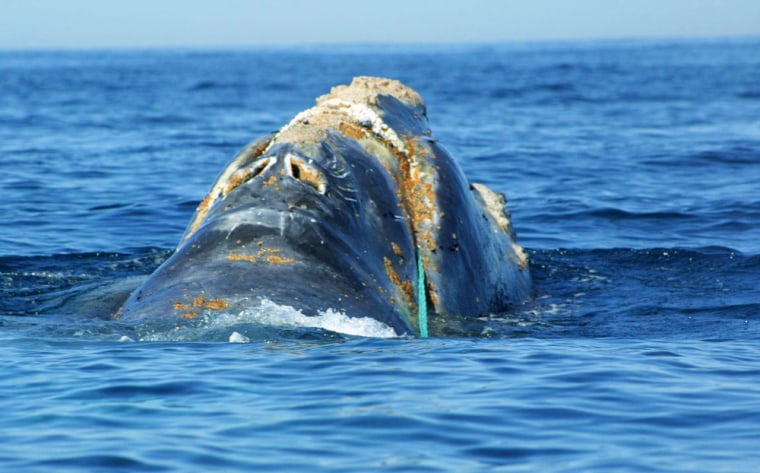The Bush administration is considering speed and routing restrictions for East Coast shipping to protect North Atlantic right whales, one of the world’s most endangered large whales.
Officials with the National Oceanic and Atmospheric Administration said they plan to release details by month’s end of the first step in the process of issuing the new rules.
Only about 300 right whales exist, in U.S. and Canadian waters of the western North Atlantic, the species depleted largely by centuries of commercial whaling. Now, accidental collisions with ships or entanglements with nets threaten recovery. Adult right whales, which can live about 70 years, range from 45 to 60 feet long and weigh 30 to 80 tons.
“At this point, the North Atlantic right whale population status is so critical that even the loss of a single individual may impact the species’ ability to recover,” said Aleria Jensen, a fishery biologist with NOAA’s Office of Protected Resources.
Public comment period
Jensen’s office intends to set uniform speed limits after receiving 60 days of public comment and holding meetings on the East Coast. Unlike many environmental regulations, this is not a response to a lawsuit.
Right whales, apparently named for a belief that they were the “right whale” to hunt, were much hunted in the past for their oil. The International Whaling Commission banned commercial whaling in 1986.
NOAA says there have been at least 292 ship strikes on large whales from 1975 to 2002, including 38 involving North Atlantic right whales. That’s partly because the whales are slow-moving, love shallow water and spend time on the water’s surface, often in shipping lanes.
An environmental group, Public Employees for Environmental Responsibility, says ship strikes are on the rise because of increasing coastal ship traffic, smaller crew size, bigger vessels, faster speeds and deafening underwater noise that obscures approaching propellers.
Options for protecting the last right whales, NOAA officials say, include:
- Rerouting vessels around the highest-risk areas.
- Restricting ship speeds to not-yet-determined levels in those areas.
- Changing their routes to minimize the time spent in whale areas.
Affected vessels would be 65 feet or longer or weighing more than 300 gross tons, but the limits would be imposed only in areas where the whales were present.
After outlining the options, NOAA plans to complete a six-month environmental assessment of potential impacts and then propose the new regulations by early 2005.
“The goal is to reduce the overlap of ships and whales, but we have limited management options,” Jensen said. “We’re trying to balance this between maximum protection for the whales and minimal impact on the industry.”
Shippers' response
Hubert Wiesenmaier, executive director of American Import Shippers Association said the new rules would make nobody in the industry really happy, but officials will adopt a wait-and-see attitude.
“The impact on transit time is always important for cargo owners,” he said. But, he added, “Nobody would say, ‘Go full steam ahead, hit the whales,' because it costs us money.”
Bruce Russell, a retired Coast Guard officer in Chevy Chase, Md., recommended in an August 2001 report that ships reduce their usual speeds of 14-25 mph to a range of 10-15 mph in whale areas. He estimated the new rules would cost the billion-dollar shipping industry $10 million to $20 million a year.
